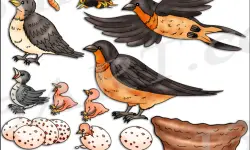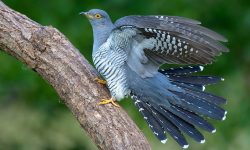Texas, with its vast coastline, inland lakes, estuaries, and diverse climates, is a remarkable hotspot for gull watching in North America. With 23 species recorded across the state, Texas offers birders and nature enthusiasts an opportunity to observe both common and rare gulls—from graceful coastal residents to unexpected winter wanderers. In this article, we explore each of the 23 gull species found in Texas, highlighting their key traits, seasonal status, and where you’re most likely to encounter them.
1. Laughing Gull (Leucophaeus atricilla)

The Laughing Gull is the most common and recognizable gull along the Texas Gulf Coast. Known for its distinctive “laughing” call and striking black hood during the breeding season, this medium-sized gull is the only species that breeds regularly in Texas. It nests in large colonies on barrier islands and salt marshes, laying eggs in simple ground scrapes.
Present year-round, Laughing Gulls thrive in coastal habitats, from beaches and estuaries to fishing piers and parking lots. Highly adaptable, they feed on fish, insects, crustaceans, and human scraps—often scavenging near shrimp boats and docks. Their bold behavior and loud calls make them one of the most visible and vocal seabirds in the region.
Although abundant, they face threats from habitat loss and disturbance, especially on nesting islands. Still, their versatility allows them to flourish in both natural and urban environments.
2. Ring-billed Gull (Larus delawarensis)
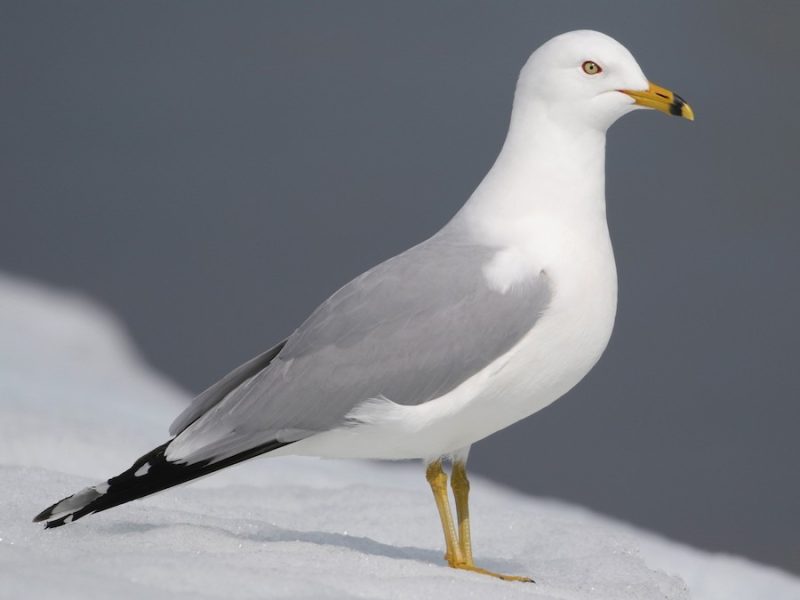
The Ring-billed Gull is a common winter visitor across Texas, especially around lakes, rivers, reservoirs, and even urban parking lots and landfills. It is easily recognized by its clean white plumage, pale gray back, and the distinctive black ring encircling its yellow bill.
Arriving in large numbers during the fall, Ring-billed Gulls spend the cooler months in Texas before migrating north to breed. They are often seen in dense flocks, loafing near water or foraging on open ground, where they feed on insects, fish, scraps, and even bread tossed by people. Their adaptability and boldness make them one of the most familiar inland gulls during winter.
Though not a breeder in Texas, their seasonal abundance makes them a key part of the state’s winter birdscape.
3. Franklin’s Gull (Leucophaeus pipixcan)
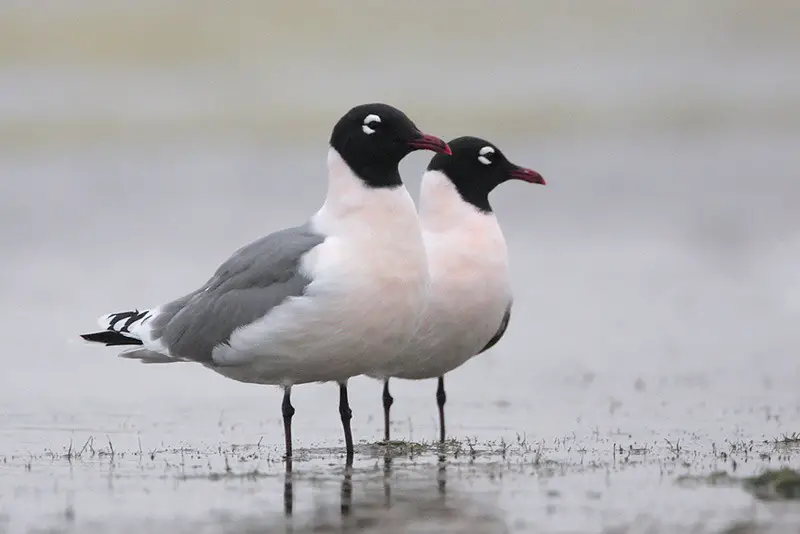
Franklin’s Gull is a medium-sized migratory gull that passes through Texas during spring and fall migrations. Breeding in the prairie wetlands of the northern U.S. and Canada, it makes long-distance journeys to wintering grounds in South America, with Texas serving as an important stopover site.
In breeding plumage, it’s easily recognized by its jet-black hood, white eye crescents, and a subtle pinkish tint on the breast, making it one of the most striking gulls in migration flocks. During its brief visits, Franklin’s Gull often gathers near lakes, flooded fields, and coastal marshes, feeding on insects and aquatic invertebrates before continuing its journey.
4. Bonaparte’s Gull (Chroicocephalus philadelphia)
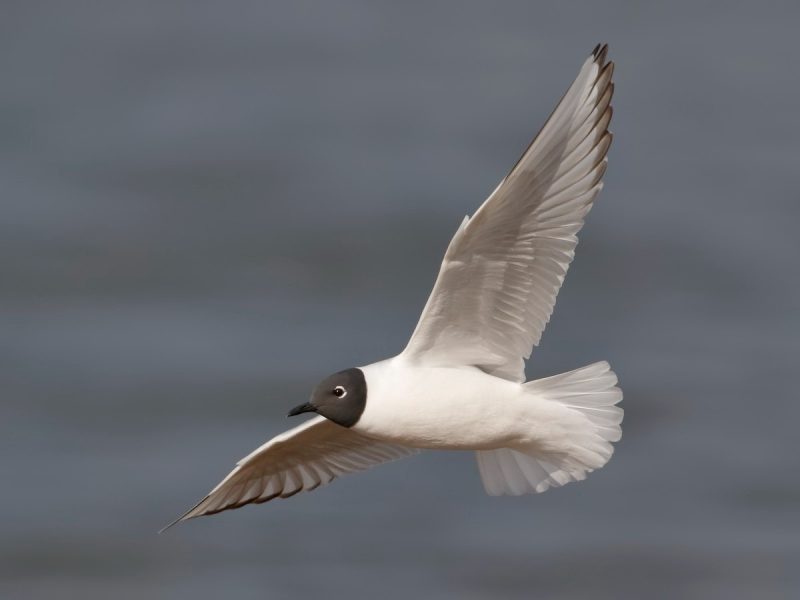
Bonaparte’s Gull is one of the smallest and most delicate gulls to grace the Texas skies, bringing a sense of grace and agility rarely seen in its larger cousins. This elegant species winters along the Gulf Coast and inland reservoirs, arriving in Texas from its breeding grounds in the boreal forests of Canada.
In non-breeding plumage, Bonaparte’s Gull is easily identified by its crisp white head accented with a dark ear spot, while breeding adults develop a sleek black hood that contrasts sharply with their clean white underparts and pale gray wings. Its narrow bill and slim build contribute to its tern-like appearance and flight style.
What sets this gull apart is its unique foraging behavior. Unlike most gulls that scavenge or pick at the surface, Bonaparte’s Gull often catches insects mid-flight or skims the water with precision and speed—resembling a tern more than a typical gull. This behavior makes it a joy to observe, especially over calm lakes or quiet bays where its aerial agility is on full display.
Though smaller and quieter than most gulls, Bonaparte’s Gull leaves a lasting impression with its refined beauty, graceful movement, and unusual feeding style.
5. Herring Gull (Larus argentatus smithsonianus)
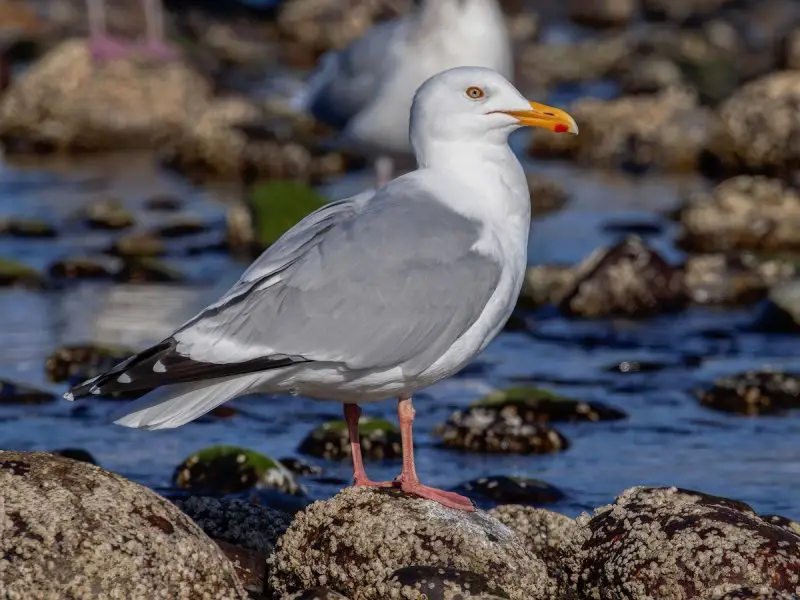
The American Herring Gull is one of the largest and most imposing gulls seen in Texas during the winter months. With its broad wingspan, pale gray mantle, and thick yellow bill tipped with a red spot, the adult Herring Gull exudes a sense of quiet authority wherever it lands. Its fleshy pink legs and robust build help distinguish it from sleeker, smaller species.
Though it breeds in northern North America, the Herring Gull is a common winter visitor along the Texas coast, particularly around harbors, piers, beaches, and rocky jetties, where it scavenges fish, refuse, and even other birds’ eggs or chicks. Inland, it may appear at large lakes and reservoirs, loafing on shorelines or soaring overhead in search of food.
Juvenile Herring Gulls are mottled brown and take up to four years to attain adult plumage, often confusing observers with their variable appearances. Despite this, their sheer size, slow wingbeats, and assertive behavior make them one of the most recognizable and dominant gulls wherever they appear.
6. California Gull (Larus californicus)
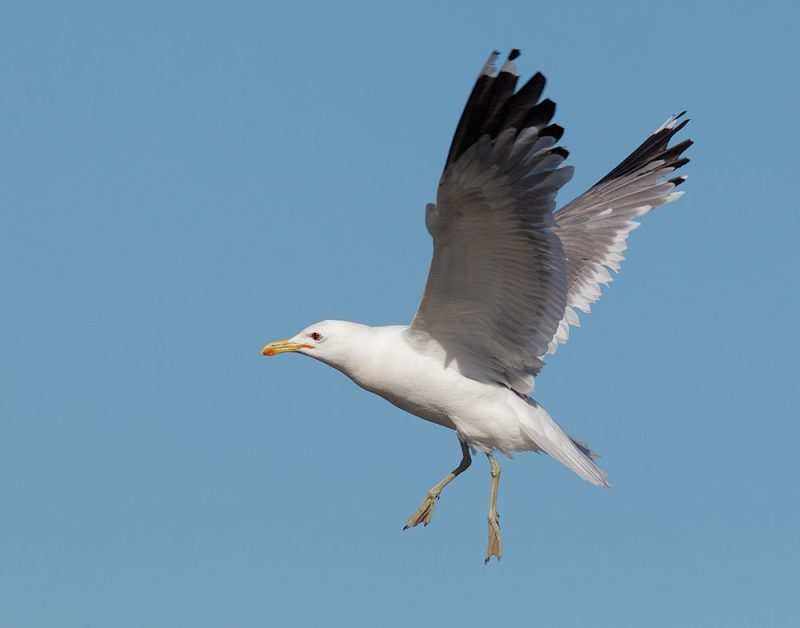
The California Gull is a medium-sized gull that winters and migrates through the western and northern regions of Texas, making brief but regular appearances at inland lakes, agricultural fields, and landfills. Though less common along the Gulf Coast, it is often found foraging alongside other gull species in mixed flocks.
It is easily recognized by its dark eye, yellowish legs, and a distinctive bill pattern—a red spot near the tip bordered by a black ring. This combination helps distinguish it from the more familiar Ring-billed and Herring Gulls. In flight, California Gulls show clean white underwings and a moderate build, giving them a sleek but sturdy profile.
As an opportunistic feeder, this gull thrives in human-altered landscapes, often scavenging food scraps or hunting insects in plowed fields. Though not abundant in Texas, it remains a reliable seasonal visitor for sharp-eyed birders.
7. Lesser Black-backed Gull (Larus fuscus)
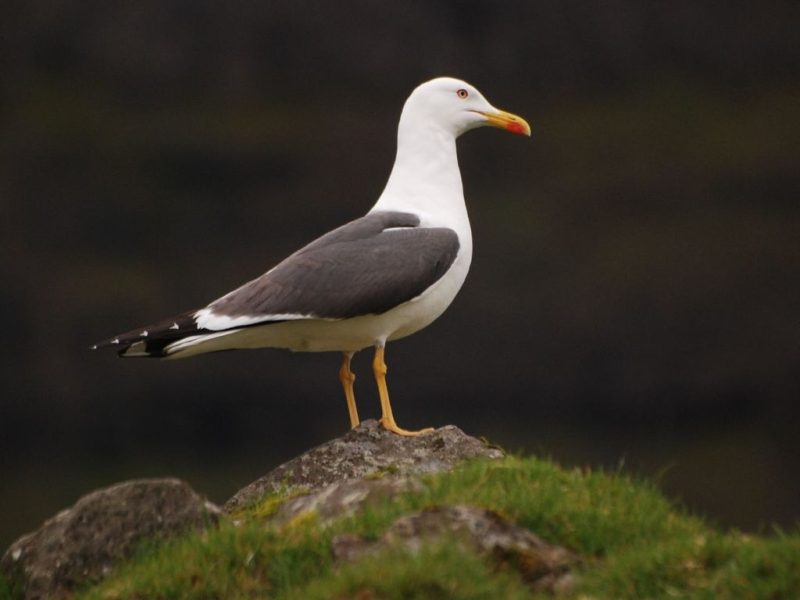
Once considered a rarity, the Lesser Black-backed Gull is now a regular winter presence in Texas, especially along the upper Gulf Coast and near large inland reservoirs. This striking species stands out with its slate-gray to black back, bright yellow legs, and crisp white head during non-breeding season.
Slightly smaller and slimmer than the Herring Gull, the Lesser Black-backed Gull has a more refined appearance, with a narrower bill that bears a small red spot near the tip. Adults in full winter plumage are elegant and clean-cut, while younger birds pass through several plumage stages marked by dusky grays and browns.
Typically seen roosting with other large gulls on sandbars, docks, or lakeshores, this species has rapidly expanded its range into North America in recent decades. Its increasing presence in Texas reflects broader shifts in gull distribution and migration, making it a prime target for winter birdwatchers.
8. Glaucous Gull (Larus hyperboreus)
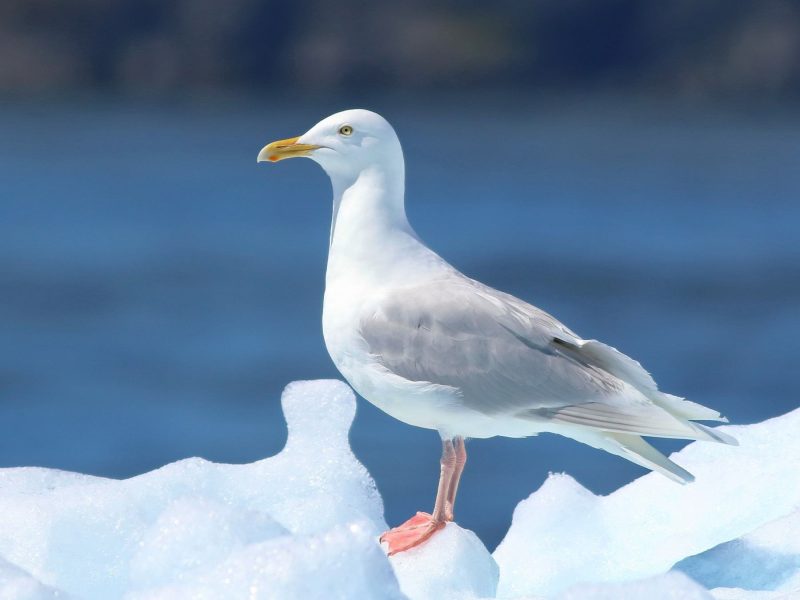
The Glaucous Gull is a massive Arctic-breeding species and one of the largest gulls in the world, rarely but reliably seen along the Texas coast during winter. Its impressive size, pale gray upperparts, and completely white wingtips (primaries) make it unmistakable among winter gulls. Add to that a thick, yellow bill with a red spot, and this species commands attention wherever it appears.
Glaucous Gulls typically arrive in late winter, often after cold fronts, and are most often spotted around coastal jetties, bays, and beachfronts. Juveniles are uniformly pale and bulky, lacking the dark flight feathers seen in most immature gulls.
Though uncommon, the Glaucous Gull’s sheer size and ghostly coloration make any sighting a memorable one for Texas birders.
9. Iceland Gull (Larus glaucoides kumlieni)
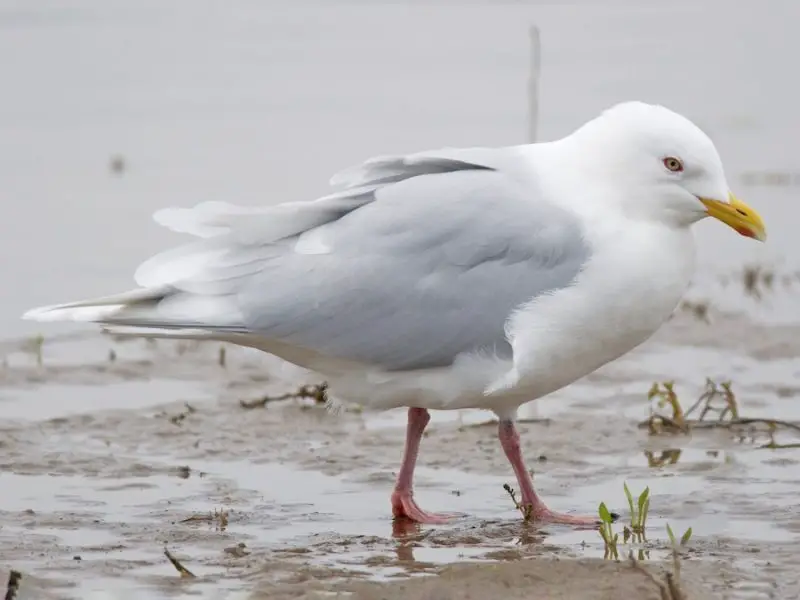
The Iceland Gull, specifically the Kumlien’s subspecies, is a rare and elegant winter visitor to the upper Texas coast. Slightly smaller and slimmer than the Glaucous Gull, it shares the pale, soft-gray appearance but has a more refined build, often described as delicate and buoyant in flight.
Adults show pale gray upperwings and light, slightly patterned primaries, while immature birds are washed in soft tans and creams, without the harsh contrasts of many other young gulls. The bill is smaller and typically bicolored in juveniles.
Sightings in Texas usually follow northern cold fronts or coastal storms, especially around harbors, piers, and open beaches. Though subtle in appearance, the Iceland Gull is highly sought after by gull enthusiasts due to its rarity and understated beauty.
10. Black-headed Gull (Chroicocephalus ridibundus)
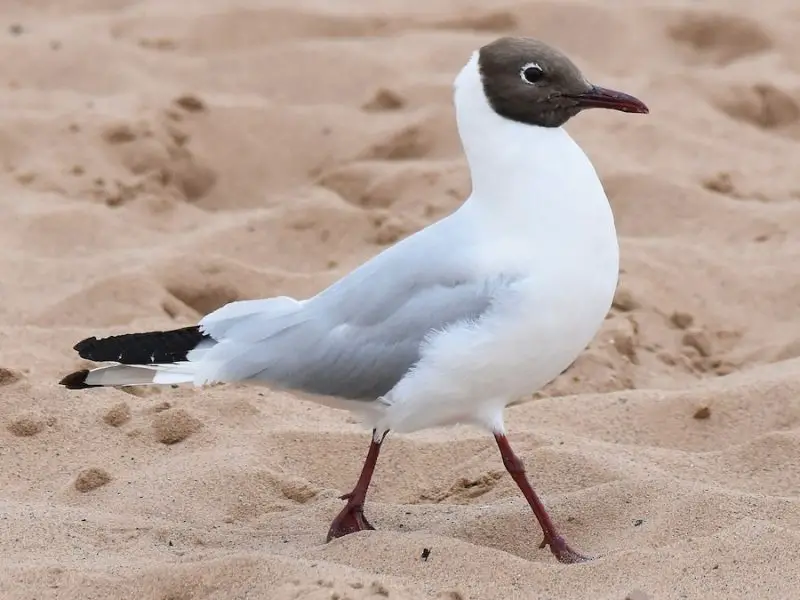
Widespread in Europe and Asia, the Black-headed Gull is a rare but regular winter visitor along the Texas coast, often appearing in small numbers among flocks of Laughing or Bonaparte’s Gulls. Despite its name, the bird’s hood is not truly black—in breeding plumage, adults wear a deep chocolate-brown head, offset by red legs and a red bill, creating a striking, delicate profile.
In winter, the head becomes largely white with a dark ear spot, making the species easy to confuse with Bonaparte’s Gull. However, its slightly larger size, pale gray mantle, and longer legs help set it apart. These gulls are typically seen near tidal flats, estuaries, or coastal lagoons, where they forage for small fish, invertebrates, or scraps.
Although uncommon, the Black-headed Gull is a rewarding find for birders scanning coastal flocks during the cooler months.
11. Little Gull (Hydrocoloeus minutus)
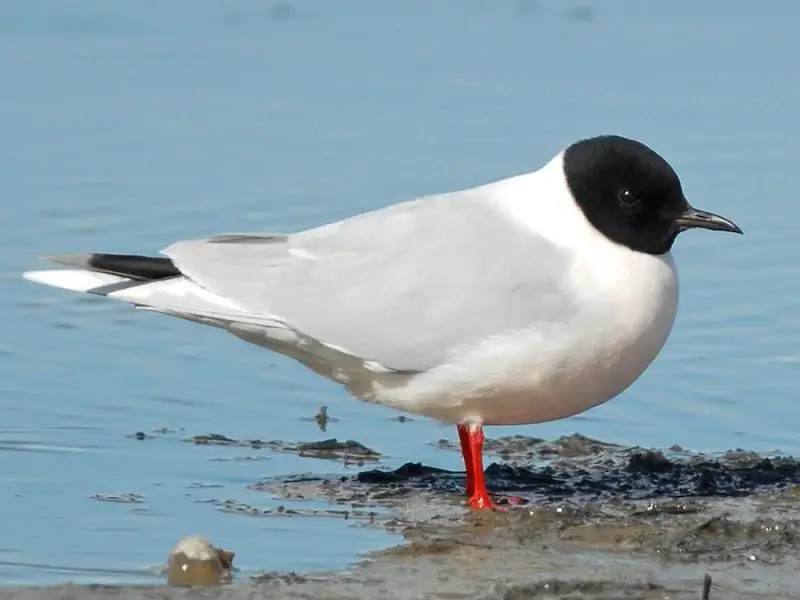
The aptly named Little Gull is the smallest gull species in the world and a rare migrant or winter visitor to Texas. Despite its size, it is unmistakable when seen well—adults in flight show distinctive black underwings, which contrast beautifully with their otherwise pale gray and white plumage.
This gull breeds in northern Eurasia and migrates across the Atlantic, occasionally reaching large inland lakes in Texas during late fall or early spring. Most sightings occur during migration stopovers, where Little Gulls often mix into flocks of Bonaparte’s Gulls, darting with graceful, tern-like agility as they pluck insects from the water’s surface.
Due to its rarity and striking appearance in flight, the Little Gull is considered a prize sighting among Texas gull-watchers.
12. Sabine’s Gull (Xema sabini)
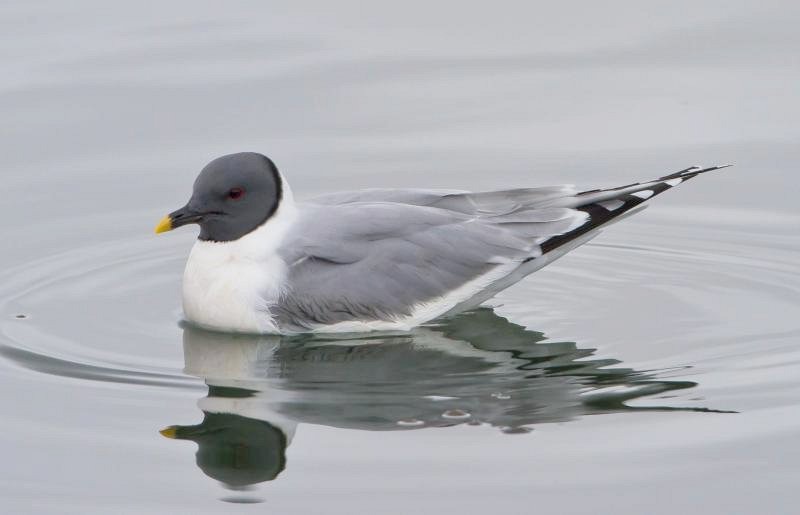
Sabine’s Gull is one of the most visually striking and rarest migrant gulls to pass through Texas. It is most frequently observed offshore or near coastal waters, especially during pelagic birding trips in the Gulf of Mexico. Its distinctive wing pattern—a bold tri-colored combination of white, black, and gray—and deeply forked tail make it instantly recognizable in flight, even at a distance.
This small, agile gull breeds in the high Arctic and migrates across oceans to wintering grounds off the coast of South America. In Texas, it appears occasionally during spring and fall migration, usually following storm systems or strong fronts.
Sabine’s Gull is a rare treat for birders, combining grace, rarity, and unmistakable plumage in a single fast-flying silhouette over the waves.
13. Common Gull (Larus canus)
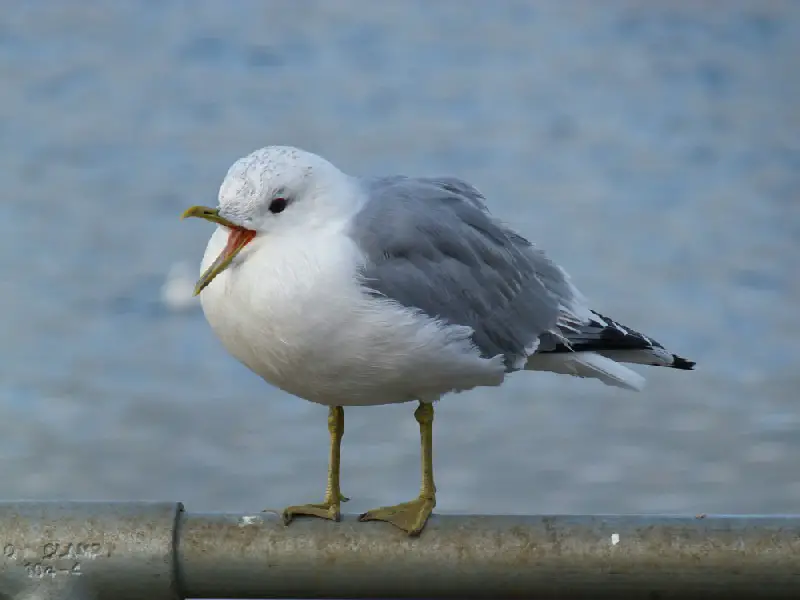
Also known as the Mew Gull, the Common Gull is a scarce and often-overlooked winter visitor in Texas. Slightly smaller than the Ring-billed Gull, it has a more rounded head, greenish-yellow legs, and a subtle, gentle expression that sets it apart with careful observation.
This species breeds in northern North America and Eurasia and is most often reported in Texas along the Gulf Coast, as well as near large inland lakes during the colder months. In mixed flocks, its resemblance to more common species can cause it to go unnoticed, making it a favorite challenge for experienced gull-watchers.
Quiet, understated, and elegant, the Common Gull rewards those who take the time to look closely among the crowd.
14. Short-billed Gull (Larus brachyrhynchus)
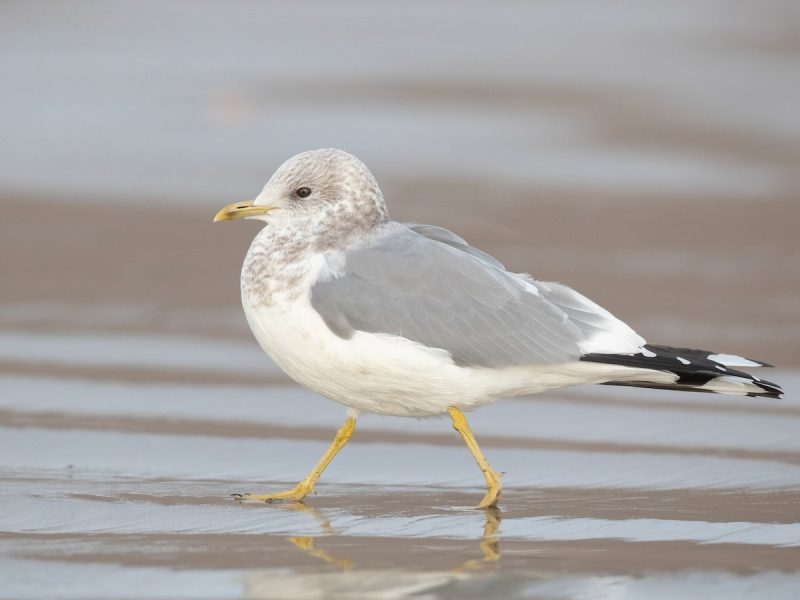
The Short-billed Gull, once grouped with the Mew Gull, is now recognized as a distinct North American species, breeding in Alaska and western Canada. In Texas, it is considered an accidental visitor, with only a handful of confirmed sightings, typically during late fall or winter.
This small, subtle gull closely resembles its cousin, the Common Gull, but has slightly paler plumage, a shorter bill, and distinct black-and-white wingtip patterns. Its soft, nasal call also differs slightly. Due to these nuanced features, identification requires expert scrutiny, especially when observed in mixed flocks of similar gulls.
Any confirmed sighting of a Short-billed Gull in Texas is considered a notable record, drawing attention from dedicated birders and state listers.
15. European Herring Gull (Larus argentatus)
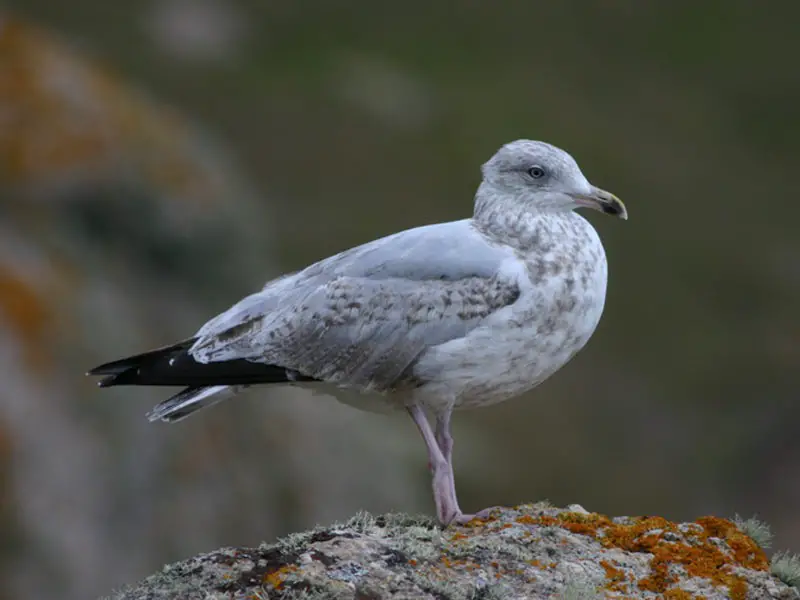
A rare transatlantic wanderer, the European Herring Gull occasionally reaches Texas as a vagrant during winter, particularly after strong weather systems originating from the North Atlantic. It is the Old World counterpart to the familiar American Herring Gull but differs subtly in structure and plumage.
Adult European birds tend to have a cleaner gray mantle, pinker legs, and sharper contrasts in wing patterning, while juveniles can appear paler or more uniform. Due to the overlap in features, positive identification demands close comparison with nearby American Herring Gulls.
Though rare, the presence of this gull in Texas highlights the long-distance vagrancy some seabirds are capable of, crossing entire oceans to appear unexpectedly on Gulf Coast beaches.
16. Yellow-legged Gull (Larus michahellis)
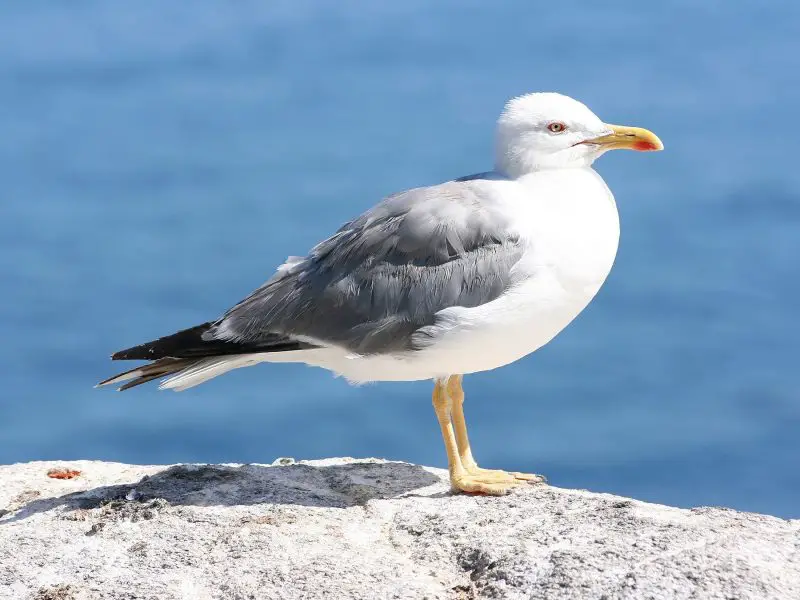
Hailing from southern Europe, the Middle East, and North Africa, the Yellow-legged Gull is an extraordinary rarity in North America, with only a few records ever documented along the Gulf of Mexico—including possible occurrences in Texas.
This gull resembles the European Herring Gull but sports bright yellow legs, a paler gray back, and a more aggressive facial expression. It also has distinct wingtip contrasts and a thicker bill, often with a pronounced red gonys spot. These traits make it one of the most difficult gulls to identify accurately in North America, and its status here remains controversial among experts.
For many birders, a confirmed Yellow-legged Gull sighting is a once-in-a-lifetime event, requiring photographs, detailed notes, and often debate in the birding community before acceptance into official state records.
17. Black-tailed Gull (Larus crassirostris)
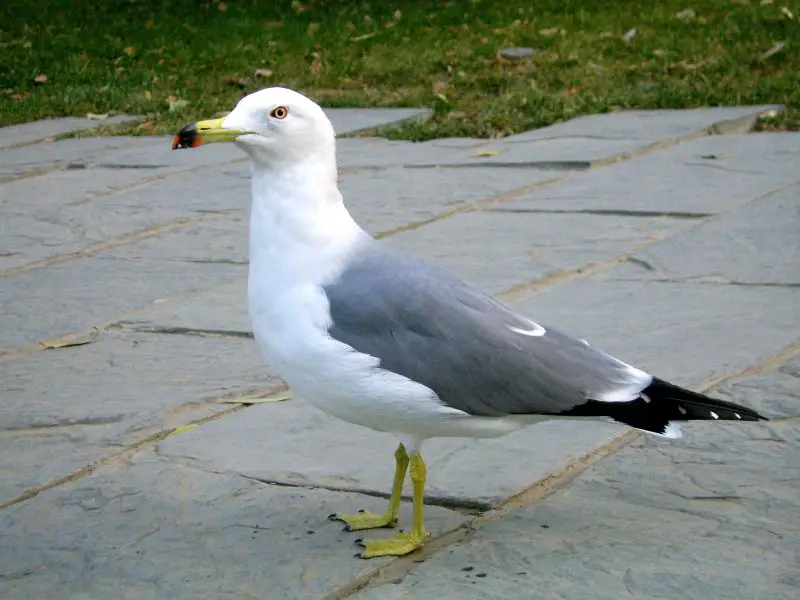
A familiar sight along the coasts of East Asia, the Black-tailed Gull is an ultra-rare vagrant in North America, with just a handful of verified sightings, including one or two unconfirmed records from Texas. Any appearance in the Lone Star State generates significant excitement among gull enthusiasts.
This medium-sized gull is named for its distinct black tail band, which stands out against its pale gray back and white body. Its yellow bill tipped with red and black, along with dark eyes and a soft call, gives it a unique profile among Texas gulls.
Though sightings are extremely scarce, persistent observers along the Texas Gulf Coast during winter or migration may one day glimpse this truly global wanderer.
18. Yellow-footed Gull (Larus livens)
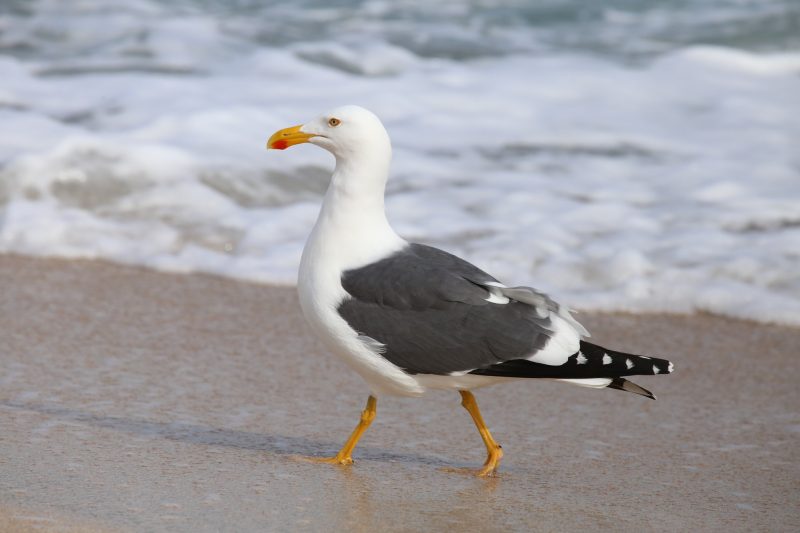
Endemic to the Gulf of California, the Yellow-footed Gull occasionally makes its way to southern Texas, especially during late fall or winter. These rare wanderers are usually seen along coastal shorelines, jetties, or tidal flats, sometimes in the company of similar large gulls.
At first glance, the Yellow-footed Gull closely resembles the Western Gull, but its bright yellow legs and slightly paler mantle help distinguish it. It is a large, broad-chested species with a thick yellow bill and sharp, alert expression.
Though far from home, the Yellow-footed Gull has now been recorded often enough to be considered an occasional visitor—a treat for those scanning winter gull flocks on the Texas coast.
19. Western Gull (Larus occidentalis)
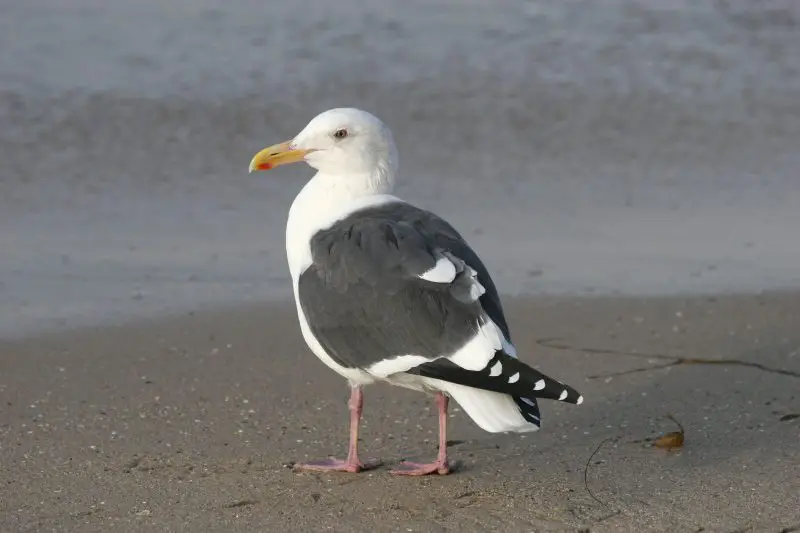
A true bird of the Pacific, the Western Gull is extremely rare in Texas, with most records tied to storm-driven vagrants arriving during winter. It is a large, powerful gull with a dark slate-gray back, pink legs, and a thick yellow bill with a bold red spot near the tip.
Western Gulls are normally found along the Pacific Coast from British Columbia to Baja California, rarely straying far from saltwater. Their appearance in Texas is usually short-lived and often occurs after severe weather systems push birds inland or eastward.
For Texas birders, a confirmed Western Gull is a noteworthy and exciting find, standing out from more common species with its bold coloration and bulky build.
20. Slaty-backed Gull (Larus schistisagus)
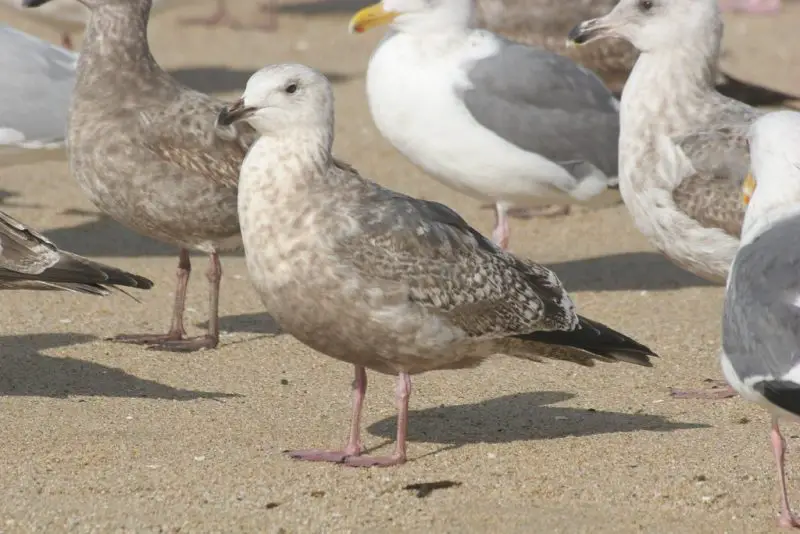
Hailing from Northeast Asia, the Slaty-backed Gull is a rare but increasingly recorded winter vagrant in Texas. This large, robust gull resembles a Lesser Black-backed Gull, but key differences set it apart—most notably its broader body, paler slate-gray mantle, and the distinctive “string of pearls” pattern formed by white spots on its black primary feathers.
Adults feature pink legs, a thick yellow bill with a red spot, and a somewhat fierce, heavy-jawed expression. In flight, the contrasting wing pattern and large size help separate it from other dark-mantled gulls.
Though sightings remain few, the Slaty-backed Gull is a growing target of interest among Texas gull-watchers during the colder months.
21. Glaucous-winged Gull (Larus glaucescens)
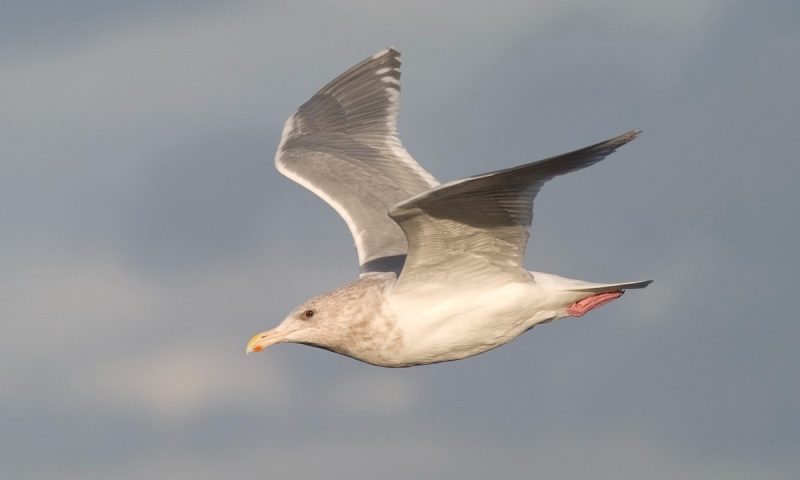
Native to the Pacific Northwest, the Glaucous-winged Gull is a very rare vagrant in Texas. This large, pale gull can be distinguished by its uniform gray wings and back, which lack the dark wingtips seen in many other gulls.
Its hefty build, pale eyes, and soft gray plumage give it a washed-out appearance, often blending in with overcast coastal skies. Identification can be challenging, especially when hybrid individuals are involved, but its sheer size and matching wing-and-back tone are key field marks.
Occasional Texas records—mostly during late winter and early spring—make this species a notable find for experienced observers scanning coastal gull flocks.
22. Great Black-backed Gull (Larus marinus)
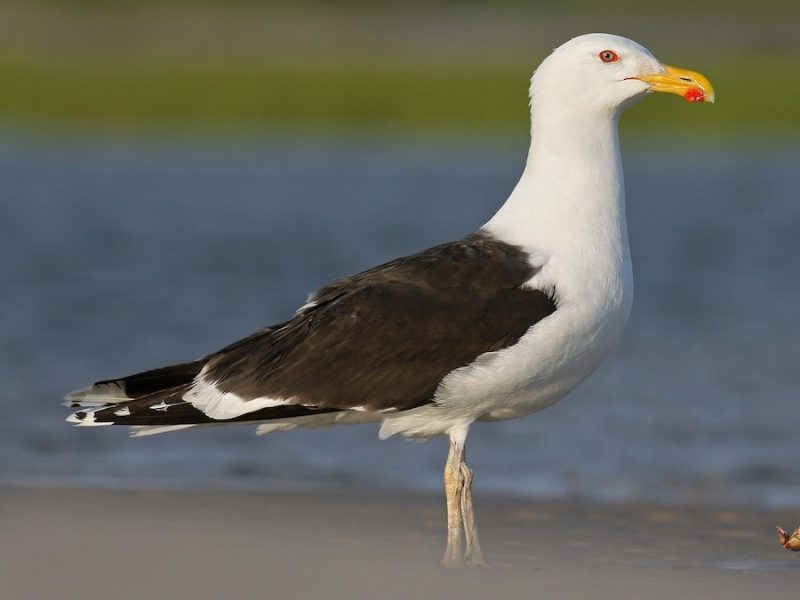
Towering over every other gull, the Great Black-backed Gull holds the title of the world’s largest gull species. Rare but regular along the Texas Gulf Coast in winter, this impressive bird is instantly recognizable by its inky black back, bright pink legs, and massive yellow bill with a blood-red spot.
A true apex predator among gulls, it frequently scavenges but is also known to kill smaller birds and steal prey from others. Its powerful flight, bold plumage contrasts, and dominant presence make it unmistakable among mixed flocks.
Though never common, the Great Black-backed Gull is a spectacular and reliable winter presence that commands attention wherever it appears.
23. Kelp Gull (Larus dominicanus)
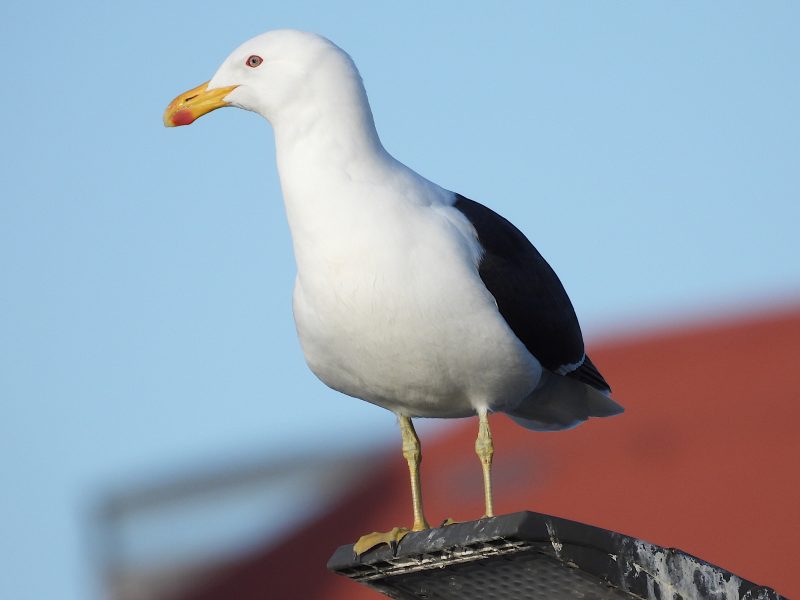
A fixture of the Southern Hemisphere, particularly in South America, Africa, and Australasia, the Kelp Gull is extremely rare in North America. Yet a few verified sightings—often after tropical storms or hurricanes—have placed it along the Texas coast.
This medium-to-large gull has a dark greenish-black mantle, bright yellow legs, and a heavy bill with a pronounced red spot. Its appearance closely resembles that of the Lesser Black-backed Gull but with subtle differences in structure, behavior, and mantle tone.
Any confirmed sighting of a Kelp Gull in Texas is a significant ornithological event, usually requiring photographs, expert consultation, and official documentation.
Conclusion: A Gull-Watcher’s Paradise
With its rich combination of habitats and geographical position, Texas is a dynamic state for gull diversity. From year-round residents like the Laughing Gull to Arctic wanderers and transatlantic rarities, Texas offers thrilling opportunities for novice and expert birders alike. Each winter, shorelines, landfills, and lakes across the Lone Star State become a field guide in motion. Whether you’re chasing rare vagrants or simply enjoying the chatter of a flock, gull watching in Texas is an experience as vast and varied as the skies they soar.



